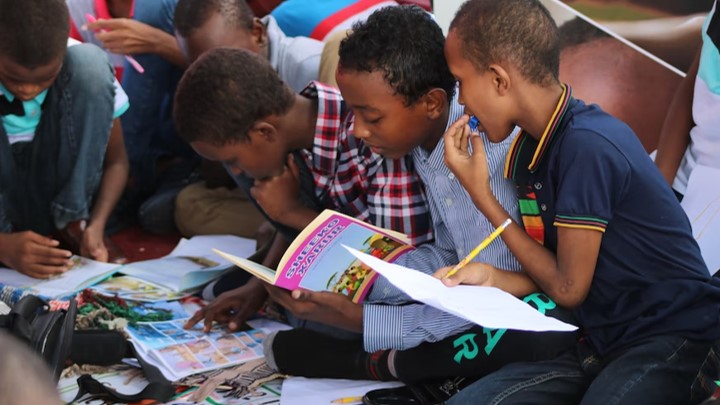Last Updated on April 22, 2023 by Uncle Pat Ugwu
As a teacher, you must have known that children learn differently. This is why educators have developed different methods for effective teaching and learning. In this post, I will share a pretty long list of effective teaching methods to help both new and age-long teachers.
Today, there are a lot of things that distract individuals from learning. Many of them lack the concentration to study. As good gadgets and internet access are, they can become distractive if not properly utilized. Please check our interactive teaching strategy post.
Sit back and relax, let us smoothly ride on this journey together.
Methods for Effective Teaching
1. Teacher-Centered Instruction
The teacher-centered style, which is widely accepted as the most traditional approach, is founded on the premise that the teacher has primary responsibility in the learning environment. Teachers run the classroom and direct all activities. Students are often seated at individual desks facing the teacher in this manner.
While collaborative projects are possible, the majority of classroom time is spent with the teacher teaching ideas and offering individual assignments. In other words, while the teacher actively gives the knowledge, the learners passively absorb it.
Pros and Cons
This teaching style, which is based on behavioral theory, allows for direct control over changes in student behavior. I have in this blog the 10-minute teaching session idea that will also be helpful for you.
The teacher-centered approach to education includes both pros and cons. Although it has been criticized for favoring passive learning, it emphasizes the significance of the teacher’s role as a facilitator.
2. Small Group Instruction
Small group instruction (SGI) is frequently used after whole group teaching and offers learners a lower student-teacher ratio interaction, usually in groups of four to six students. Teachers may use SGI to work more closely with each student on a specific learning target, reinforce skills mastered in whole-group teaching, and assess student comprehension.
Good Numbers fits each student’s unique requirements, delivers direct instruction, and constantly maintains them in their zone of proximal development, allowing them to close learning gaps on their own.
Pros and Cons
Students who struggle to ask questions and participate in big groups may benefit from working in small groups, where they feel more at ease and less overwhelmed. This is good for methods for effective teaching.
Students, on the other hand, may feel pressure to constantly be involved, to always contribute to classes, and to always play some type of part in the group activity.
3. Student-Centered Learning
As we explore switching the emphasis from the teacher to the students, the remaining techniques on this list are considered student-centered or constructivist. With the advancement of the education sector and society in general, the concept of a student-centered approach has grown in popularity, and for good reason. Students participate in planning, implementation, and assessment in student-centered classrooms.
Involving the students in these decisions gives them more responsibility and ownership than the teacher. Teachers must also become accustomed to shifting their leadership style from directive to consultative. Meanwhile, students may work in small groups, visit areas, and move freely across the classroom.
Pros and Cons
By avoiding direct transmission of knowledge, teachers can assist pupils to develop critical thinking and a sense of responsibility. Students may develop their analytical thinking skills by making sense of what they are learning, linking it to past knowledge, and discussing it with others.
To have the freedom to accomplish whatever you want, you must be willing to accept responsibility for the process and the consequences. When the instructor makes the lecture engaging, this strategy works well. But Students may become bored, their thoughts may wander, and they may miss important information if this is not provided.
4. Project-Based Learning
Project-based learning, a relatively recent teaching style, fits within the student-centered approach. Students execute projects in project-based learning, as the term implies. Another significant aspect of the initiatives is their relevance to societal problems.
Projects are typically developed in answer to an open-ended inquiry such as “How can our environment be greener?” or “How was our curriculum prepared in the past and how can it be improved in the future?” These can be large, substantial projects in which students learn, investigate, think critically, assess, analyze, make decisions, collaborate, and do other things.
Pros and Cons
By allowing students to organize their work in groups, cooperative learning is increased. I consider this very useful for methods for effective teaching.
Students who have never worked in a group before may struggle to change roles and reach an agreement.
5. Montessori
The Montessori approach is now most commonly used in preschools, kindergartens, and lower elementary grades. In montessori methods for effective teaching strategy, the teacher creates an ideal classroom atmosphere full of activities from which the students can choose to work. Furthermore, the teacher assists the students to ensure that they select an acceptable amount of courses from all academic areas.
The Montessori approach also supports the use of “materials,” or carefully chosen learning objects. There are trays with various varieties of triangles, for example, cards with explanations describing the components of a bird. Furthermore, the Montessori approach contains curricular topics that teach social skills as well as practical life skills like cooking and cleaning.
Pros and Cons
The multi-age learning environment is distinctive and essential to this educational style. Working with older children allows younger children to improve their social, communication, leadership, and emotional abilities. This method is equally beneficial to older children.
Some teachers and students may struggle to adjust to the curriculum’s looseness in comparison to established teaching approaches. It is critical to keep this in mind before opting to adopt certain Montessori principles or even put them into teaching.
6. Flipped Classroom
Flipped learning is the notion of offering online lectures that students may see from home to substitute teaching in the classroom. This implies that the student will be present in the classroom as well as exposed to online learning resources.
FLIP stands for Flexible environment, Learning culture change, Intentional content, and Professional educator, which are the four foundations of this form of learning. In principle, this strategy allows for more time in class to be spent on active learning rather than instruction.
Pros and Cons
Students now have more influence over their education. Students have the option of studying at their own pace when viewing video content or other resources at home. These benefits of hybrid learning will give you more insight.
The technique expects that students will complete the out-of-class preparation and be ready to participate in class at all times. However, there is a possibility that not all students will always be prepared for the classroom lesson.
7. Personalized Education
Personalized education takes the student-centered approach to a new level by reacting to each individual learner’s unique needs, talents, and shortcomings as much as possible. Any methods for effective teaching should always consider the specific need of learners.
Each student is given a learning plan based on what he or she already knows and how he or she learns best. Individualized education tailors learning to the student. It offers several undiscovered benefits to both instructors and students.
Pros and Cons
Personal attention is provided to each child to ensure that his or her intellectual and creative skills are developed, and a kind environment encourages polite student-teacher interactions.
Teachers must adjust their speed, conduct extensive preparation, and learn to understand and cater to the requirements of each student. This may be time intensive for the teachers.
Final Thoughts
The bottom line is that each teacher must discover a teaching style that works for him or her. A motivated teacher who is confident in their abilities is an excellent teacher! So, if any of the methods for effective teaching described above tickles your interest, why not learn more about them? You could come across a fresh strategy that engages your students while also improving their learning and your teaching experience!







